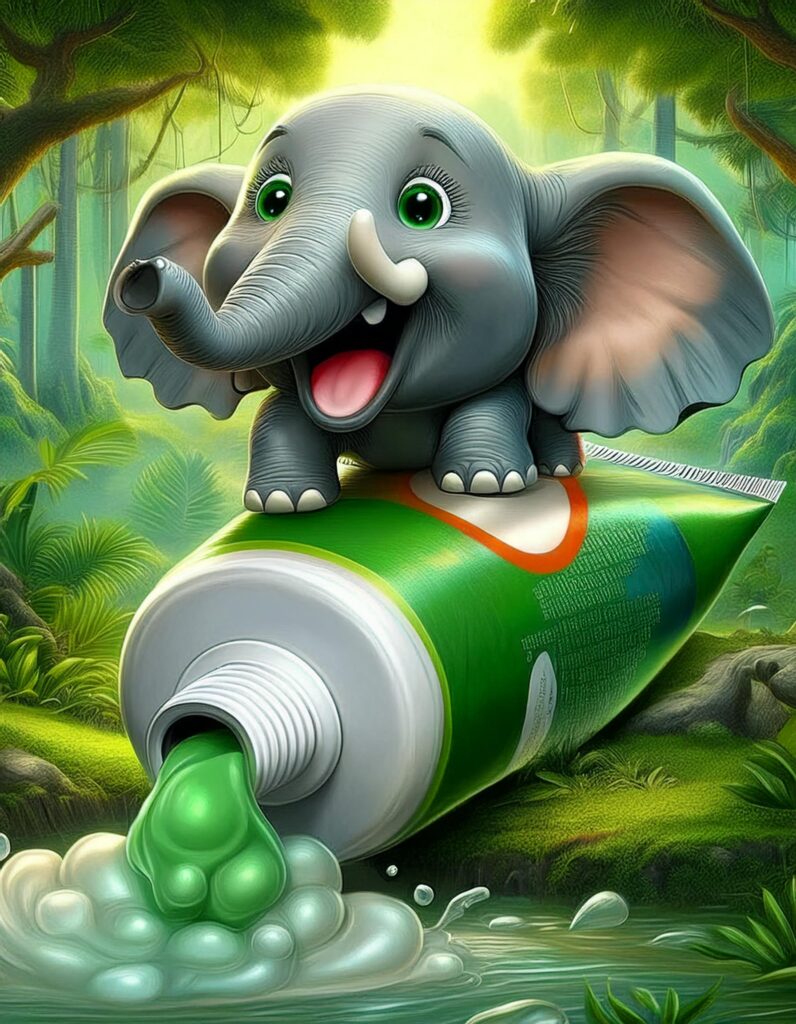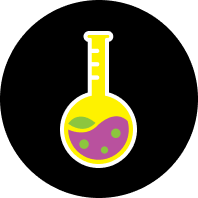
Elephant Toothpaste Experiment | An Easy Chemistry Experiment for Kids
Make a Foamy Eruption with This Fun Science Activity!
Get ready for an exciting easy chemistry experiment for kids that bubbles over with fun! The elephant toothpaste experiment creates a foamy eruption using just a few simple ingredients. Kids will love watching the reaction as it expands and spills over like a giant tube of toothpaste—perfect for curious young scientists!
Whether you’re looking for an engaging STEM activity, a cool party trick, or just a fun way to explore chemistry at home, this experiment is a guaranteed crowd-pleaser.
What You’ll Learn in This Easy Chemistry Experiment for Kids
By trying this foamy reaction, kids will explore:
- How chemical reactions create gas and expansion
- The role of catalysts in speeding up reactions
- The science behind decomposition and oxygen release
- Fun, hands-on chemistry concepts through play
This experiment is a fantastic way to introduce kids to real scientific principles while keeping learning exciting!
Why This Experiment Matters
The elephant toothpaste experiment is more than just a cool reaction—it demonstrates the power of catalysts. A catalyst is a substance that speeds up a reaction without being consumed, and in this case, yeast helps break down hydrogen peroxide into oxygen and water. The oxygen gets trapped in soap, creating a massive foam explosion!
Real-world applications of similar reactions can be found in everything from baking bread to industrial chemical processes.
Quick Facts
- Time Needed: 10-15 minutes
- Difficulty Level: Easy to Moderate
- Best For: Ages 6–12 (elementary school kids)
- Science Type: Chemistry
- Mess Level: Moderate to High
- Materials Needed:
- Hydrogen peroxide
- Dry yeast
- Warm water
- Dish soap
- Food coloring (optional)
- Measuring cups
- A plastic bottle or container
Tip: Use different strengths of hydrogen peroxide to see how it affects the foam explosion!
What’s the Science?
This easy chemistry experiment for kids is a great way to see how a catalyst speeds up a reaction. When yeast is mixed with hydrogen peroxide, it rapidly breaks down the hydrogen peroxide into water and oxygen gas. The oxygen gets trapped in the soap, forming lots of tiny bubbles that create a foamy eruption. The reaction is exothermic, meaning it also produces heat!
Fun Fact Corner

Hydrogen peroxide is actually made by your body in tiny amounts to fight germs – your cells are little chemists too!
Ask your child: “What do you think would happen if we added more yeast? Would it make more or less foam?”
Try This Easy Chemistry Experiment for Kids!
Grab your supplies and make your own foamy eruption! This exciting science activity is a great way to explore chemistry in a hands-on, unforgettable way.
Share your results with us on social media @arecipeforscience


Looking for more fun science activities? Check out our Massive Explosive Soap or explore our full collection of hands-on experiments at A Recipe for Science!
The Science of Bubbling, Foaming, and Heat: A Fun Chemistry Experiment for Kids
Science is full of exciting transformations, and some of the most thrilling involve bubbling reactions, gas formation, and even heat! Have you ever seen a reaction speed up right before your eyes or felt warmth from a foamy eruption? That’s chemistry in action!
This experiment explores three important chemistry concepts: catalysts, gas formation, and exothermic reactions—all of which work together to create some seriously fun (and messy) science.

Why Does This Chemistry Experiment Matter?
From rocket launches to baking soda volcanoes, chemical reactions shape our world. Understanding how reactions work helps us grasp everything from how bread rises to why certain substances create heat. Plus, hands-on experiments make science more exciting and easier to understand!
Check out more Chemistry experiments.
Breaking It Down: Three Key Chemistry Concepts
- Catalysts: Speeding Up the Reaction
- A catalyst is like a supercharger for a chemical reaction—it helps things happen faster without being used up. In this experiment, a catalyst breaks down hydrogen peroxide into oxygen gas, creating a rapid foaming effect!
- Gas Formation: Bubbles, Bubbles Everywhere!
- When a chemical reaction produces gas, it often creates visible bubbles or foam. Here, the reaction releases oxygen gas, which gets trapped in soap bubbles, making the foamy eruption grow before your eyes.
- Exothermic Reactions: Feel the Heat!
- Some reactions give off heat as a byproduct—this is called an exothermic reaction. If you touch the bottle or container after the experiment, you might notice it feels warm!
Where Do We See These Reactions in Everyday Life?
These chemistry concepts aren’t just for experiments—they play important roles in our world:
- Catalysts are used in car engines to help reduce pollution.
- Gas formation happens when yeast makes bread dough rise.
- Exothermic reactions keep hand warmers hot in winter.
Why Kids Love This Experiment
This hands-on chemistry experiment is the perfect way to introduce kids to scientific concepts in an exciting way. Watching the foamy eruption grow bigger and bigger keeps kids engaged, while feeling the warmth of an exothermic reaction makes the science even more real.
Ready to see chemistry in action? Gather your materials, mix them up, and watch the reaction take off!
Check out more Chemistry experiments.

Elephant Toothpaste
Ingredients
Instructions
-
Click here for the full experiment details. Checkout the main website: One Little Project
-
Get experimenting!
-
Feed your knowledge.
-
Come back for more recipes for science!
Note
High volume hydrogen peroxide is a strong and concentrated form of what would be used for cleaning and disinfecting - the active ingredient percentage is higher than 3%. This makes it more powerful and effective AND more hazardous! Handle with care.





